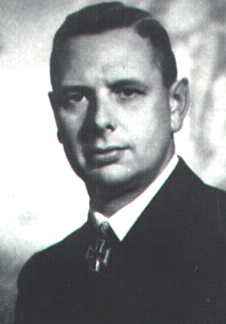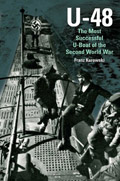Transporting POWs - The Atlantic Crossing
From North African collection areas, prisoners were transported by train to embarkation points at Casablanca, Oran, and Morocco, Algeria. While waiting they read books donated by the American, German or International Red Cross, wrote letters home or paced around the camp. The length of their wait at these locations depended upon the availability of shipping to the United States, usually a returning Liberty ship or an empty ocean vessel.Authority aboard ship was maintained by American Military Police although the day-to-day discipline was enforced by the German officers and NCOs who were tough on their own men. The slightest infraction of the rules resulted in a severe "dressing down" or confinement to quarters on bread and water. Prisoners were fed as well as their captors and supplied with cigarettes, writing paper, and a selection of books to occupy their trip. When the facilities on the prisoners' ships were particularly plush, the men received correspondingly better treatment.
One such transatlantic crossing, described in detail by the Washington Daily News on June 10, 1943, noted that the Germans slept in cabins (as opposed to the cramped conditions of the cargo holds), dined on ice cream and stewed plums, played shuffleboard on deck, and staged boxing and wrestling exhibitions for the American wounded on board. "An American soldier, just about recovered from his wounds," said the Daily News, "looked down at the empty swimming pool and said wistfully: 'Gee, I wish the prisoners would ask for some water in the pool, so we can all have a swim." The Atlantic crossing of the POW convoys was generally uneventful. With the exception of rare probes by enemy fighters and submarines the journeys became routine, and throughout the war not one ship carrying prisoners was sunk by the enemy.
The most difficult problem the POWs had to contend with was seasickness and inadequate exercise and ventilation. POWs were able to complain about these conditions to the Swiss Legation which protected German interests. After their six week journey from North Africa the POWs ended up at one of the two embarkation points, Camp Shanks, New York or Norfolk, Virginia- from which the next and last stage of the journey would take place.
Once the POWs landed in the United States, after being under the sole control of the Army, different agencies were drawn into the POW program to pursue their separate areas of jurisdiction and control, which caused confusion. The Quartermaster's Office was responsible for collecting, storing, and eventually returning the prisoners' possessions as well as disinfecting their clothing upon arrival. The commanding general of the Port of Embarkation was responsible for deciding which ships would be unloaded in what order and whether the unloading should be accomplished by ferrying the men in from the ship or docking it directly at the pier.
The Military Police had the responsibility of interpreting orders to the POWs, escorting them through the bureaucratic maze, and guarding them en route to their camps. The Chief of Transportation and railroad officials, of course, had to be kept informed about the arriving prisoners, the number of men, the number of railroad cars required, security precautions, and prisoner destinations. To complicate matters further, the intelligence community, through the Director of the Intelligence Division of the Port of Embarkation, watched over the list of incoming prisoners, detaining and interrogating those POWs whose value had been somehow overlooked during their first screening and report all pertinent information to the Security Division of the Office of Chief of Transportation. Such information was vital if proper security was to be maintained.
Britain, unlike the United States, systematically interrogated each arriving batch of prisoners regardless of their rank or suspected information. The resulting system centered in nine interrogation depots in England. The most famous was the "London Cage" a large house on the corner of Kensington Park Gardens and Bayswater Road, where teams of the Prisoner of War Interrogation Section (PWIS), mostly British Army Sergeants of German-Jewish stock who spoke fluent German and understood the prisoners, mentality, extracted crucial information from the most hardened U-Boat captains, SS officers, and Luftwaffe leaders with remarkable success. According to Colonel A.P. Scotland, Commandant of the London Cage, information was gained with the least amount of physical degradation by an agent posing as a prisoner from the same town or by applying psychological pressure.
Playing on the German prisoners' fear of the Russians was another technique said to be successful. At the London Cage a Russian-speaking interpreter, wearing a KGB uniform, would sit in on the interrogation of certain prisoners. If his presence failed to frighten the prisoner, the stamping of the prisoner's file with "NR" usually did. When the prisoner asked what "NR" meant, the reply was "Nach Russland" (to Russia).
The fear of being shipped to Russia was evidently enough to break down the prisoner's resistance rapidly. No such blanket interrogations occurred when the prisoners arrived in the United States. Instead, the prisoners were placed aboard trains to begin their journeys to the camps.




